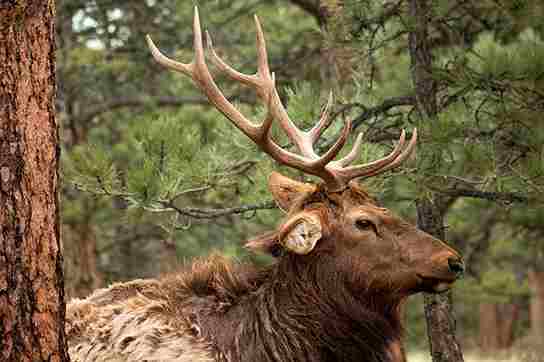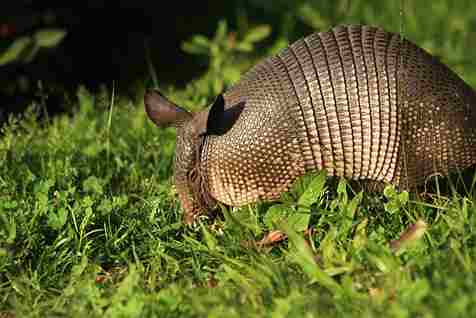Deer Call And Calling 101
Given how fast deer are, it can be very difficult to get near them unnoticed, even if you’re experienced. Deer calls make it possible to “call” deer within your range, so you can have a better aim at them.
Deer calls are devices you can use to produce the sound of a deer to attract them to you. This makes sense because human noise generally scares deer away.
In this article, we will look at why deer calls matter, some deer call sound, what are the types available, and some common ones to get you started.

What is a Deer Call?
A deer call is simply a device used to produce almost the same sound as deer. It is designed to attract deer, making them more likely to come within shooting range.
Deer calls make different deer sounds, such as wheezing, sniffing, such as bleating, roaring, snorting, and grunting. In terms of the material, most deer calls are made from wood. However, you will also find plastic and metal deer calls.
The design of each call also varies depending on the type of deer sound it produces.
In general, deer calls are very important tools every serious deer hunter must have in their arsenal. They make it possible to communicate with the animals and possibly get them to come within your shooting range.
Types of Deer Calls
Here are the more common deer call sounds you will come across in the market.
- Grunt Calls: These imitate the sound of a buck grunting, which is a common vocalization used during the rutting season.
- Bleat Calls: Bleat calls mimic the sound of a doe or fawn in distress, making them an effective way to lure in bucks looking to protect their territory.
- Snort and wheeze Calls: These calls recreate the aggressive sound a buck makes when it’s challenging another deer, perfect for luring in dominant bucks.
Factors to Consider When Choosing a Deer Call
When choosing a deer call, consider the following factors:
- Type of call: Select a call that matches the type of deer you’re targeting and the sounds they’re most likely to respond to, such as grunt calls for bucks or bleat calls for does and fawns.
- Ease of use: Choose a call that is easy to learn and use, especially if you’re a beginner. Simple grunt and bleat calls are often the easiest to master.
- Versatility: Look for calls that can produce a range of sounds, allowing you to adapt your calling strategy to different situations and deer behaviors.
- Quality: Invest in a well-made deer call from a reputable manufacturer. Quality calls are more likely to produce realistic, consistent sounds that attract deer.
- Portability: Select a call that is compact and easy to carry in the field, as you may need to move quickly and quietly to set up in a new location.
Some Popular Deer Calls
If you’re looking for the best deer call, here are some options to consider:
Extinguisher Deer Call
The Illusion Systems Extinguisher Deer Call is a versatile and easy-to-use deer call that can produce a wide range of sounds, from fawn and doe bleats to buck grunts. Its patented Modislide technology allows you to change the pitch and tone of the call quickly, making it a favorite among deer hunters. It remains our favorite deer call. Another versatile option is the Dialect Deer Grunt Deer Call by Rocky Mountains.
Key Features of Extinguisher Deer Call:
- Patented Modislide system
- Can produce buck, doe, and fawn sounds
- Easy-to-use design
Primos Deer Call
The Primos Deer Call is another popular option known for its reliability and simplicity. It’s a two-in-one call that produces both buck grunts and doe bleats, allowing you to attract deer of all types with ease.
Two of the best Primos calls you will find are the Primos Hunting Buck Roar 2 and Primos Hunting The Original Can. The latter produces the best doe bleat I’ve come across. You can choose the Primos Rut Roar for a more aggressive buck call.
Key Features of Primos Deer Call:
- Adjustable reed system
- Can produce various deer sounds
- Durable and compact design
Knight & Hale Death Chamber Deer Grunt Call
Knight & Hale Death Chamber Deer Grunt Call is a highly adjustable and versatile deer call featuring a variable-pitch reed system. This allows you to produce a wide range of deer sounds, from young bucks to mature, dominant bucks.
The call is designed with a dual-chamber system that creates rich, resonant sounds and options for increasing the realism of your calls. It’s an excellent option for hunters looking to attract big bucks during the rut.
Flextone Buck Commander Rut Hunter Deer Call
Flextone Buck Commander Rut Hunter Deer Call is a versatile deer call designed specifically for the rutting season. The call features a dual-reed system, allowing you to create a range of buck and doe vocalizations, including grunts, snorts, and bleats.
It also has a flexible body that allows for better control over volume and tone, making it possible to produce realistic and convincing calls. The compact design makes it easy to carry in the field.
Deer Call Whistle
A deer call whistle is a simple yet effective option for hunters looking for an affordable and straightforward deer call. It’s designed to mimic the distress call of a fawn, which can attract both does and bucks.
While not as versatile as the Primos or Extinguisher calls, the deer call whistle is a valuable tool for hunters on a budget. Key Features: Mimics fawn distress call Affordable and easy to use Compact design
What Call Attracts Deer the Most?
The most effective deer call depends on the situation and time of year. During the rut, aggressive buck grunts and doe estrus bleats tend to be the most attractive calls. Outside the rut, softer calls like contact grunts and social bleats may be more effective in luring deer.
The type of deer you’re targeting is also important. However, grunt calls tend to be the most versatile and effective, as they can attract both bucks and does.
When Should You Use Deer Calls?
Deer calls are most effective during the rutting season when deer are more active and responsive to calls.
However, you can still use calls outside of the rut to attract deer, though the results may be less predictable. It’s essential to monitor local deer activity and use your calls accordingly.
What is the Easiest Deer Call?
The easiest deer call is typically a simple grunt call or a doe bleat call. These calls often require minimal practice to produce realistic sounds and can be effective in attracting deer.
In terms of style, the easiest deer call to use would be a push-button or can-style call, such as the Primos “The Original Can” Deer Call. These calls require minimal skill and can produce realistic bleats by simply flipping the can or pressing a button.
How to Use a Deer Call Effectively
Here are some tips on how to deer call the right way:
- Choose the right call: Select a call that matches the sound you want to produce, such as a grunt call for bucks or a bleat call for does and fawns.
- Practice: As with most devices, deer calls have a learning phase. So, spend some time getting familiar with it before you take it along with you to your next hunt. Get familiar with the different sounds and how to produce them accurately.
- Find the right location: Position yourself in an area with good visibility, downwind from the direction you expect deer to approach, and with minimal background noise.
- Timing: Deer are more likely to respond to calls during the rutting season when they are most active. Pay attention to local deer activity and use your calls accordingly.
- Stealth: When using deer calls, make sure to remain concealed and minimize your movement, as deer are highly perceptive and can be easily spooked.
- Patience: Deer calls aren’t a magic bullet. It’s essential to remain patient and persistent, as deer may take some time to respond to your calls. Personally, I would wait between half an hour to an hour, and if no deer comes in sight, I will move to a new location.
- Vary your calls: Try to mix up the types and patterns of your calls to sound more natural.
Other Related Questions About Deer Call Sound
How Far Can Deer Hear?
Deer have an exceptional sense of hearing, which allows them to detect sounds up to a mile away in ideal conditions. However, factors like wind, terrain, and background noise can impact how far deer can hear. In most hunting situations, a well-executed deer call can be heard by deer within several hundred yards.
How Do You Call a Deer Bleat?
To call a deer bleat, you can use a bleat can, push-button call, or mouth call. To produce the bleat sound, tip the bleat can upside down, press the button on the push-button call, or blow into the mouth call following the manufacturer’s instructions. Adjust the pitch and duration to mimic the specific bleat sound you want to produce.
How Do I Call Big Bucks?
Calling big bucks typically requires a combination of aggressive buck grunts, rattling antlers, and doe estrus bleats during the rut. This combination mimics the sounds of a buck defending its territory and a receptive doe, attracting dominant bucks looking to challenge rivals and mate.
Do Deer Calls on Phone Work?
Deer call apps can work, but their effectiveness depends on factors such as speaker quality, volume, and realistic sound production. Additionally, using electronic calls for hunting is illegal in some states, so it’s essential to check your local regulations before using phone apps for deer calls.
Wrapping Up: Using Deer Call
To conclude, deer calls serve three main purposes:
- Attracting deer: They can mimic the sounds of other deer, luring them closer to your hunting area.
- Calming deer: Certain deer calls can help soothe a nervous deer, making it less likely to flee.
- Rutting behavior: During the rut, they can stimulate aggressive behavior in bucks, increasing the chances of a successful hunt.
I hope you found all the information about deer hunting calls useful. Drop any other questions or suggestions you have in the comment box.
Other interesting titles for you:






